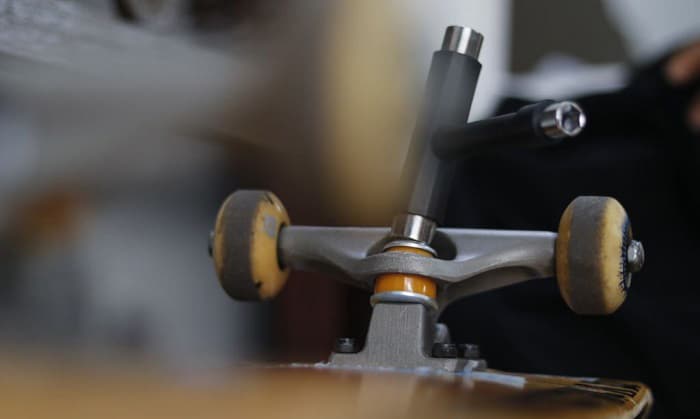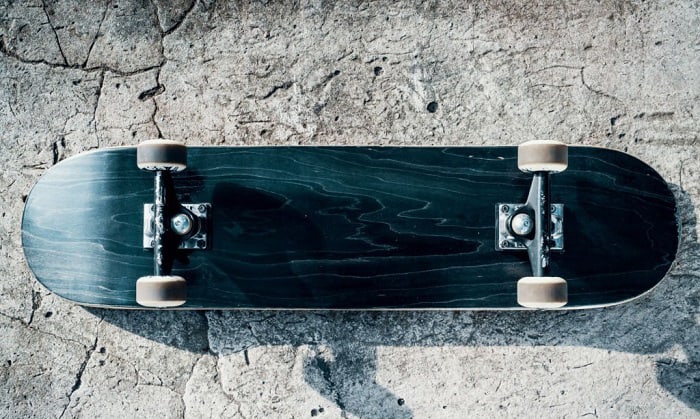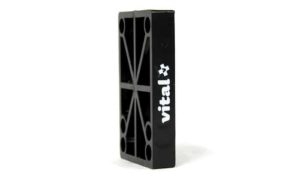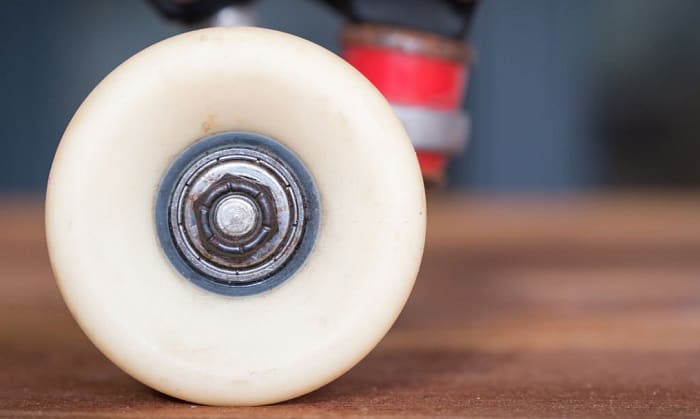As skateboarders, one of the things we don’t want to see too soon after purchasing our skateboards is our wheels and deck wearing out.
One of the most common circumstances that cause these parts to wear out is the contact between the wheels and the deck. And if you ever happen to experience this, don’t worry. Let me teach you how to prevent wheel bite.
Table of Contents
What You Need
1. Riser pads
Riser pads increase the distance of your deck from the ground. Users install these right below the decks before finally piercing the bolts through the trucks. These additions may not always be necessary. But if you ever decide to use them, be mindful of skateboard risers’ pros and cons first.
On the upside, they make the deck more durable and lessen shock on rough terrains. On the downside, they make tricks more difficult.
With that said, if you’re looking for riser pads, kindly refer to this sizing guide.
- Using 7/8″ to 1″ hardware – No riser pads are needed.
- 1″ to 1 1/8″ hardware – 1/8″ risers
- 1 1/4″ hardware – 1/4″ pads
- 1 1/2″ hardware – 1/2 riser pads
2. Skateboard deck with wheel wells
If your deck happens to have significant damage from wheel bites, you might decide to change it. With that, try searching for a deck built with wheel wells.
To illustrate, these are decks with a reverse bowl cut on the bottom side, right on top of the wheels’ position. This aspect provides more clearance between the deck and the rollers so that when you turn, these parts are less likely to make contact.
3. A T-tool
In almost any modification you do with your skateboard, you always need a T-tool. If not, at least prepare a set of equipment with the same functionality.
As a standard, you need a Phillips-head screwdriver and hexagon socket wrench.
Ways to Prevent Skateboard Wheel Bite
Method 1: Using riser pads
As mentioned, these additions sit in between the trucks and the deck. To install them, start by removing your trucks.
Loosen the nuts that lock the trucks on the skateboard. Next, unscrew the bolts from the deck’s stepping surface. Pull the wheel holders from the skateboard.
Align the holes of the riser pads with the bolt holes from the bottom side of the deck. Next, put the trucks back on and tighten the nuts.
Method 2: Using a deck with wheel wells
There’s not much manual work needed in this method, since decks with sanded wheel wells are readily available in stores nowadays. You just need to pick the right board size.
Method 3: Adjusting the kingpins
Another way to reduce the risk of wheel bites is by tightening your kingpins. This method doesn’t require adding a new accessory to the skateboard or buying a new part.
Using your T-tool or hexagon socket wrench, rotate the nut of the kingpin to the right. This motion tightens the lock on the pin. However, don’t over-tighten the kingpin, or you’ll damage the bushings. Check this article to find out how to tighten the skateboard kingpin properly.
By then, the tightness restricts the hanger from moving left and right. And in effect, leaning on either side of the skateboard won’t yield broad angles.
More Tips
Here are more ways to prevent wheel bites on your skateboard.
- Pick trucks with baseplates that are at least 50° in angle.
- Use a wheelset of a smaller size. However, remember appropriate considerations when choosing rollers, such as hardness and suitability to your riding style.
- Install a set of more rigid bushings to reduce the turning radius.
What Is Wheel Bite on a Skateboard
Simply put, wheel bites occur once the wheels make contact with the bottom surface of the skateboard deck.
This event leaves wheel bite marks on the part of the deck that aligned with the wheels and causes the rollers to thin out quickly. Here are a few instances that cause these problems:
- Turning in sharp angles
- Leaning on either side of the deck
- Stopping the skateboard
You may also experience wheel bite skateboarding with bad bushings. These parts give the trucks a broader turning radius.
Conclusion
Scratches, dents, and other skateboard issues, to a certain degree, are normal. Skateboards don’t last a lifetime, and maintaining them can be a challenge.
But if we can prevent damage to our skateboards, why wait until we have to replace their parts? Knowing how to prevent wheel bite is a big step towards preserving skateboards. With just the appropriate knowledge and tools, we’d enjoy them longer.
Do you now feel excited to do your favorite turns and tricks? Tell us what you think in the comments section.

Hi, I am Charles Harris. I opened this site to write as much as I can about my biggest passion – skateboarding!
I started as a clumsy yet passionate rookie 10 years ago to now a still passionate yet much better skateboarder! But I have to tell you, the whole journey has always been fun and rewarding, indeed not without hardship.






